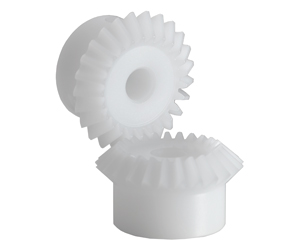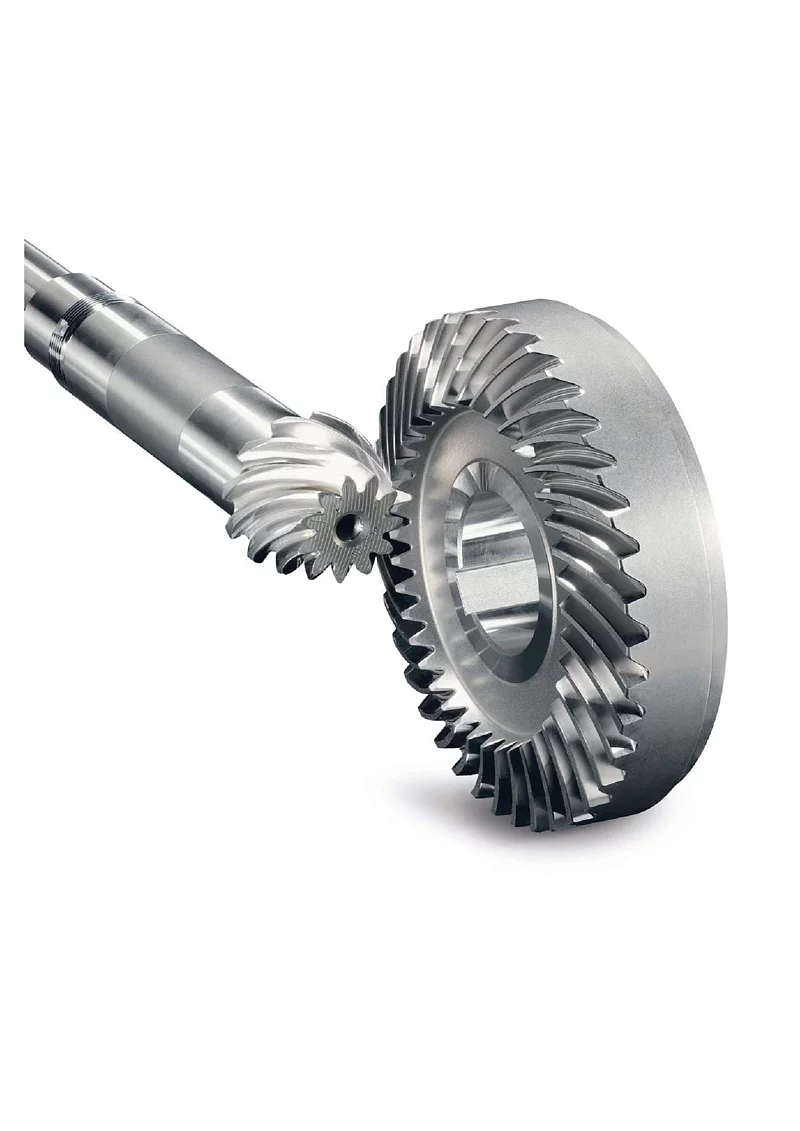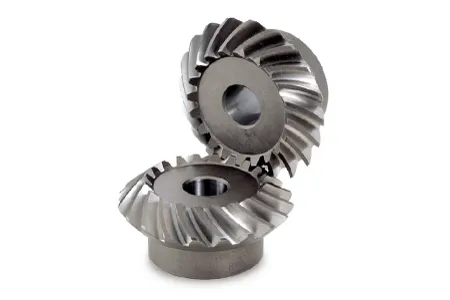Product Description
90 Degree Bevel Gears Best Quanlity Miter Spiral Supplyer Forged Plastic Sintered Metal Stainless Steel CHINAMFG for Test Machine Curtain 90 Degree Bevel Gears
Application of Bevel Gears
Bevel gears are used in a wide variety of applications where 2 shafts intersect at an angle. Some of the most common applications include:
- Differentials: Bevel gears are used in differentials to transmit power from the driveshaft to the wheels.
- Wind turbines: Bevel gears are used in wind turbines to transmit power from the rotor to the generator.
- Elevators: Bevel gears are used in elevators to transmit power from the motor to the hoisting mechanism.
- Conveyor belts: Bevel gears are used in conveyor belts to transmit power from the motor to the belt.
- Machine tools: Bevel gears are used in machine tools to transmit power from the motor to the cutting tool.
- Robotics: Bevel gears are used in robotics to transmit power from the motor to the robot’s joints.
- Aircraft: Bevel gears are used in aircraft to transmit power from the engine to the propeller or rotor.
- Marine: Bevel gears are used in marine applications, such as boat propellers and rudders.
- Construction: Bevel gears are used in construction equipment, such as bulldozers and excavators, to transmit power from the motor to the tracks or wheels.
- Agriculture: Bevel gears are used in agricultural equipment, such as tractors and combines, to transmit power from the motor to the wheels.
Bevel gears are a type of gear that consists of 2 conical gears that mesh together. The gears are typically made of steel or cast iron, and they can be either straight or spiral.
Bevel gears have a number of advantages, including:
- High efficiency: Bevel gears are very efficient, which means that they can transmit power with minimal loss.
- Compact size: Bevel gears are typically compact in size, which makes them ideal for use in applications where space is limited.
- Low noise: Bevel gears operate quietly.
- Long life: Bevel gears have a long life.
Bevel gears also have some disadvantages, including:
- High cost: Bevel gears are typically more expensive than other types of gears.
- Sensitive to lubrication: Bevel gears are sensitive to lubrication and require regular lubrication.
Overall, bevel gears are a versatile and reliable type of gear that can be used in a variety of applications. They are a good choice for applications where high efficiency and compact size are required.
| Application: | Motor, Electric Cars, Motorcycle, Machinery, Marine, Toy, Agricultural Machinery, Car |
|---|---|
| Hardness: | Hardened Tooth Surface |
| Gear Position: | Internal Gear |
| Manufacturing Method: | Cast Gear |
| Toothed Portion Shape: | Worm Gear |
| Material: | Stainless Steel |
| Samples: |
US$ 9999/Piece
1 Piece(Min.Order) | |
|---|

Can miter gears be used in precision machinery and equipment?
Miter gears can indeed be used in precision machinery and equipment. Miter gears are a type of bevel gears that transmit rotational motion between intersecting shafts at a 90-degree angle. Their design and construction make them suitable for various applications, including those requiring precision.
Here are some reasons why miter gears are suitable for precision machinery and equipment:
- Accuracy: Miter gears can provide accurate and precise motion transmission due to their meshing geometry. The teeth of miter gears are designed to ensure proper contact and alignment, resulting in minimal backlash and high positioning accuracy.
- Compact Size: Miter gears have a compact design, making them suitable for applications where space is limited. Their small form factor allows for efficient use of available space in precision machinery and equipment.
- Efficiency: Miter gears can achieve high efficiency in power transmission. With proper tooth profile design and alignment, miter gears can minimize energy losses and maximize the transfer of rotational motion, which is important for precision machinery that requires smooth and efficient operation.
- Smooth Operation: Miter gears can provide smooth and quiet operation when properly designed and manufactured. This is particularly important in precision machinery and equipment, where noise and vibration need to be minimized to ensure accurate and reliable performance.
However, it’s important to consider the specific requirements of the precision machinery or equipment when selecting miter gears. Factors such as load capacity, speed, lubrication, and maintenance should be taken into account to ensure optimal performance and longevity.
In conclusion, miter gears can be successfully used in precision machinery and equipment, offering accuracy, compactness, efficiency, and smooth operation when appropriately applied and integrated into the system.

What is the role of the pitch angle in miter gear design?
In miter gear design, the pitch angle plays a significant role in determining the characteristics and performance of the gears. Here’s an explanation of its role:
1. Definition of Pitch Angle:
The pitch angle in miter gear design refers to the angle between the gear’s tooth face and a plane perpendicular to the gear’s axis. It is typically denoted by the Greek letter “β” (beta). The pitch angle determines the shape and orientation of the gear teeth.
2. Tooth Profile:
The pitch angle influences the tooth profile of miter gears. By altering the pitch angle, the shape, size, and thickness of the gear teeth can be adjusted. Different pitch angles result in variations in the tooth geometry, such as tooth thickness, tooth height, and the angle of the tooth face.
3. Contact Ratio:
The pitch angle affects the contact ratio between the gear teeth. The contact ratio refers to the number of teeth in contact at any given moment during the rotation of the gears. An appropriate pitch angle helps optimize the contact ratio, ensuring sufficient tooth engagement and load distribution across the gear surfaces. This contributes to smoother operation, reduced noise, and improved gear life.
4. Strength and Load Distribution:
The pitch angle influences the strength and load distribution capabilities of miter gears. A proper pitch angle ensures optimal load transmission across the gear teeth, preventing concentrated stresses and reducing the risk of tooth failure or breakage. By selecting the appropriate pitch angle, designers can achieve the desired strength and load-carrying capacity for the specific application.
5. Gear Efficiency:
The pitch angle also affects the efficiency of miter gears. By considering factors such as tooth contact, sliding friction, and tooth deflection, the pitch angle can be optimized to minimize energy losses during gear meshing. Efficient gear design with an appropriate pitch angle contributes to higher overall system efficiency and reduced power consumption.
6. Noise and Vibration:
The pitch angle plays a role in determining the noise and vibration characteristics of miter gears. Improper pitch angles can result in undesirable effects, such as excessive noise, vibration, and tooth impact. By carefully selecting the pitch angle, gear designers can minimize these effects, leading to quieter operation and improved gear performance.
7. Meshing Compatibility:
When using miter gears in pairs, the pitch angles of both gears should be compatible to ensure proper meshing and smooth operation. The pitch angles need to be designed and manufactured with precision to ensure accurate alignment and optimal tooth engagement.
In summary, the pitch angle in miter gear design influences the tooth profile, contact ratio, strength and load distribution, gear efficiency, noise and vibration characteristics, and meshing compatibility. By selecting an appropriate pitch angle, gear designers can achieve the desired performance, durability, and efficiency for specific applications.

What is the purpose of using miter gears in mechanical systems?
Miter gears serve several purposes and offer distinct advantages when used in mechanical systems. Here’s a detailed explanation:
1. Change of Shaft Direction:
One of the primary purposes of using miter gears is to facilitate a change in the direction of shaft rotation. When two miter gears with intersecting shafts are meshed together, they allow the transmission of rotational motion at a 90-degree angle. This enables the redirection of power and torque to a different axis, which can be crucial for the functioning of various mechanical systems.
2. Power Transmission:
Miter gears are designed to efficiently transmit power between intersecting shafts. The meshing of the gear teeth ensures a smooth transfer of rotational energy, enabling the transmission of torque and rotational motion from one shaft to another. This makes miter gears suitable for applications where power needs to be transmitted between perpendicular axes.
3. Speed Reduction or Increase:
By using miter gears with different numbers of teeth or by combining them with other gears, speed reduction or speed increase can be achieved. The gear ratio between the miter gears determines the change in rotational speed. This allows for the adjustment of output speed to match the requirements of the mechanical system, ensuring optimal performance.
4. Compact Design:
Miter gears are known for their compact design, making them valuable in applications where space is limited. The intersecting shafts and the conical shape of the gears allow for efficient power transmission while occupying a small footprint. This compactness is particularly beneficial in devices and systems where size and weight constraints are critical factors.
5. Alignment and Torque Distribution:
Miter gears help maintain proper alignment and torque distribution between intersecting shafts. The gear teeth engagement ensures accurate alignment, which is essential for smooth and efficient operation. Additionally, the equal distribution of torque among the teeth of miter gears helps prevent excessive stress on individual gear teeth, promoting longevity and reliability.
6. Applications:
Miter gears find applications in a wide range of mechanical systems, including:
- Power transmission systems
- Automotive differentials
- Mechanical clocks
- Robotics
- Printing machinery
- Woodworking tools
- Camera lenses
In summary, the purpose of using miter gears in mechanical systems is to facilitate a change in shaft direction, transmit power efficiently, achieve speed reduction or increase, maintain a compact design, and ensure proper alignment and torque distribution. These characteristics make miter gears suitable for various applications, contributing to the functionality and performance of mechanical systems.


editor by CX 2023-11-03